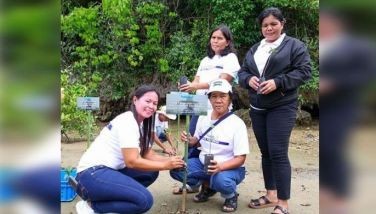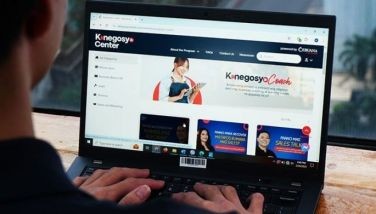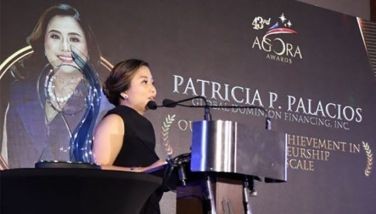Kuratong Baleleng massacre revisited

February 20, 2002 | 12:00am
On May 18, 1995 at around 5 a.m., 11 persons were shot and killed on Commonwealth Avenue, Quezon City. Hours later, PNP Chief Supts. Panfilo Lacson, Jewel Canson and Romeo Acop, and Sr. Supt. Francisco Zubia held a press conference. With then-PNP boss Recaredo Sarmiento, they said the 11 were members of the dreaded Kuratong Baleleng gang that the Anti-Bank
Robbery Task Force had long been after. The task force had sighted them in a van, pursued them, and a shootout ensued. Later that day, two more persons were found dead from gunshots, one in Pasig and the other in Laguna.
The next day, tabloid photographer Armando Capili revealed in a headline story that the police had rubbed out the 11 alleged robbers. He said he saw most of the bodies handcuffed behind their backs, and that policemen had planted two armalites inside the bullet-riddled van. His story did not receive much attention until May 21, when Officer Eduardo de los Reyes went to ABS-CBN with a stunning story. As investigators, he and Officer Corazon de la Cruz had been sent to the scene to study how they could file an official but false report that the ratratan, or summary execution, was a legitimate shootout. They couldn’t live with the illegal order and thus decided to tell the truth. It appeared from their accounts that eight males, two of them minors, had been arrested at the Kuratong hideout in Las Piñas’s Superville Subd. on the night of May 17. All eight were brought to Camp Crame headquarters, where two other captives (crimes unknown) were thrown in with them. All ten were then loaded into the gang’s van and taken to Commonwealth where they met their end. The eleventh body supposedly had been in the Camp Crame morgue for days, a victim of a separate execution for still unknown reason. The body found in Pasig was Kuratong gang leader Wilson Soronda and the one in Laguna was the moneybag; both had been arrested also on the night of May 17 but in another hideout.
Two more witnesses consequently surfaced. Jane Gomez, a niece of Soronda, said she had witnessed his killing. Mario Enad said he saw the policemen at Superville taking out suitcases and other items that they never listed in the operations report.
From there the case took several routes. Three Senate committees jointly inquired into the killings and concluded that:
* those killed at Commonwealth "were defenseless" and none of them fired a gun;
* they were killed in cold blood while in police custody;
* appropriate charges of homicide or murder be filed against Lacson, Canson, Acop, Zubia and 15 other officers; and
* senators continue probing the PNP special investigating team, led by a general, which "acted in evident haste" to charge the officers but only "to manipulate the investigative process to result in a coverup."
The NBI also stepped in. Like the Senate, it recommended that then-Ombudsman Conrado Vasquez indict the four high PNP officers and their men for murder. Months before receiving the NBI report, Vasquez already had acted on the case filed by the PNP special team against 98 officers – the same case the Senate had found to be "infirm, containing attachments admittedly . . . more favorable to the accused." Vasquez had assigned the case to the Office of Military Affairs for preliminary investigation, a move which the officers contested since they said it rightfully belonged to then-Special Prosecutor Aniano Desierto.
Desierto eventually was appointed Ombudsman, and the officers stopped objecting to the preliminary investigation. Prosecutor Leonardo Tamayo initially upheld the indictment of the 98, but Desierto rejected it and formed another panel of investigators. This panel recommended the indictment for murder of only 26 – Lacson as principal; the other high officers, as accessories after the fact. They went to the Sandiganbayan for trial, but the accused asked for another Ombudsman investigation. Private prosecutors objected, but the Ombudsman lawyer agreed. The accused remained free.
Desierto assigned Prosecutor Roger Berbano to head the third panel. Meantime, Tamayo was promoted to Special Prosecutor. Private lawyers discovered that his daughter had lawyered for Canson in the first two preliminary investigations. Tamayo said he had wanted to inhibit himself due to the conflict of interest, but Desierto told him to stay on. Meantime, too, the accused got a Quezon City court to restrain the PNP from hearing their administrative case. They also got two injunctions from the Court of Appeals to stop their summary dismissal.
In Dec. 1995, Officer De los Reyes squealed that a businessman was offering P5 million to go slow on Lacson. He was to read scripted answers to questions that would be posed in a forthcoming clarificatory hearing at the Ombudsman’s office to downgrade the charge against Lacson to mere accessory. Prosecutor Berbano also said two lawyers visited him twice in behalf of Lacson. In Feb. 1996, the hearing pushed through. De los Reyes stuck to his story, but the Ombudsman nonetheless downgraded the charge. With this, the accused ran to the Sandiganbayan to argue that it had lost jurisdiction over the case since no officer higher than senior superintendent (colonel) was charged as a principal. Congress would later investigate Desierto for receiving ten TV sets from the businessman whom De los Reyes had denounced for attempted bribery.
In June 1996, Acop’s brother Reynaldo, also a police general, was assigned to head the PNP Crime Laboratory. This made him custodian of evidence of the killings. The accused also petitioned the justice department to kick De los Reyes and De la Cruz out of the witness protection program. In 1997 De los Reyes fled to Canada. De la Cruz and Capili left the NBI office and recanted their testimonies. Hearings at the Quezon City court, where the case had landed, ended abruptly with the absence of witnesses.
In March 2001, after Lacson left the PNP to run for senator, three officers surfaced to affirm the original testimonies of the five witnesses. Insp. Ysmael Yu, a 1992 PMA graduate assigned to the PNP Special Action Force, swore that he had led that assault team at Superville Subd. on the night of May 17, 1995. He was there on orders of Canson and briefings by Lacson, Acop and Zubia. Eight men had surrendered to his team without a fight. One talked with one of the eight, a former policeman named Carlito Alap-ap. He withdrew when a separate investigating team arrived. He learned the next day that the eight were executed.
Insp. Abelardo Ramos and Officer Wilmor Medes were assigned at the time with Zubia’s Traffic Management Group. As perimeter security men for the assault team, they too were briefed by Canson, Lacson and Acop. They escorted the captives back to Camp Crame, where the four high officers again met with them to plan the execution. Ramos and Medes then drove ten handcuffed men to Commonwealth Avenue.
All this, the Supreme Court heard yesterday in a petition to revive the murder case in view of new witnesses and evidence to show that the high officers had planned the killings.
You can e-mail comments to jariusbondoc@workmail.com
Robbery Task Force had long been after. The task force had sighted them in a van, pursued them, and a shootout ensued. Later that day, two more persons were found dead from gunshots, one in Pasig and the other in Laguna.
The next day, tabloid photographer Armando Capili revealed in a headline story that the police had rubbed out the 11 alleged robbers. He said he saw most of the bodies handcuffed behind their backs, and that policemen had planted two armalites inside the bullet-riddled van. His story did not receive much attention until May 21, when Officer Eduardo de los Reyes went to ABS-CBN with a stunning story. As investigators, he and Officer Corazon de la Cruz had been sent to the scene to study how they could file an official but false report that the ratratan, or summary execution, was a legitimate shootout. They couldn’t live with the illegal order and thus decided to tell the truth. It appeared from their accounts that eight males, two of them minors, had been arrested at the Kuratong hideout in Las Piñas’s Superville Subd. on the night of May 17. All eight were brought to Camp Crame headquarters, where two other captives (crimes unknown) were thrown in with them. All ten were then loaded into the gang’s van and taken to Commonwealth where they met their end. The eleventh body supposedly had been in the Camp Crame morgue for days, a victim of a separate execution for still unknown reason. The body found in Pasig was Kuratong gang leader Wilson Soronda and the one in Laguna was the moneybag; both had been arrested also on the night of May 17 but in another hideout.
Two more witnesses consequently surfaced. Jane Gomez, a niece of Soronda, said she had witnessed his killing. Mario Enad said he saw the policemen at Superville taking out suitcases and other items that they never listed in the operations report.
From there the case took several routes. Three Senate committees jointly inquired into the killings and concluded that:
* those killed at Commonwealth "were defenseless" and none of them fired a gun;
* they were killed in cold blood while in police custody;
* appropriate charges of homicide or murder be filed against Lacson, Canson, Acop, Zubia and 15 other officers; and
* senators continue probing the PNP special investigating team, led by a general, which "acted in evident haste" to charge the officers but only "to manipulate the investigative process to result in a coverup."
The NBI also stepped in. Like the Senate, it recommended that then-Ombudsman Conrado Vasquez indict the four high PNP officers and their men for murder. Months before receiving the NBI report, Vasquez already had acted on the case filed by the PNP special team against 98 officers – the same case the Senate had found to be "infirm, containing attachments admittedly . . . more favorable to the accused." Vasquez had assigned the case to the Office of Military Affairs for preliminary investigation, a move which the officers contested since they said it rightfully belonged to then-Special Prosecutor Aniano Desierto.
Desierto eventually was appointed Ombudsman, and the officers stopped objecting to the preliminary investigation. Prosecutor Leonardo Tamayo initially upheld the indictment of the 98, but Desierto rejected it and formed another panel of investigators. This panel recommended the indictment for murder of only 26 – Lacson as principal; the other high officers, as accessories after the fact. They went to the Sandiganbayan for trial, but the accused asked for another Ombudsman investigation. Private prosecutors objected, but the Ombudsman lawyer agreed. The accused remained free.
Desierto assigned Prosecutor Roger Berbano to head the third panel. Meantime, Tamayo was promoted to Special Prosecutor. Private lawyers discovered that his daughter had lawyered for Canson in the first two preliminary investigations. Tamayo said he had wanted to inhibit himself due to the conflict of interest, but Desierto told him to stay on. Meantime, too, the accused got a Quezon City court to restrain the PNP from hearing their administrative case. They also got two injunctions from the Court of Appeals to stop their summary dismissal.
In Dec. 1995, Officer De los Reyes squealed that a businessman was offering P5 million to go slow on Lacson. He was to read scripted answers to questions that would be posed in a forthcoming clarificatory hearing at the Ombudsman’s office to downgrade the charge against Lacson to mere accessory. Prosecutor Berbano also said two lawyers visited him twice in behalf of Lacson. In Feb. 1996, the hearing pushed through. De los Reyes stuck to his story, but the Ombudsman nonetheless downgraded the charge. With this, the accused ran to the Sandiganbayan to argue that it had lost jurisdiction over the case since no officer higher than senior superintendent (colonel) was charged as a principal. Congress would later investigate Desierto for receiving ten TV sets from the businessman whom De los Reyes had denounced for attempted bribery.
In June 1996, Acop’s brother Reynaldo, also a police general, was assigned to head the PNP Crime Laboratory. This made him custodian of evidence of the killings. The accused also petitioned the justice department to kick De los Reyes and De la Cruz out of the witness protection program. In 1997 De los Reyes fled to Canada. De la Cruz and Capili left the NBI office and recanted their testimonies. Hearings at the Quezon City court, where the case had landed, ended abruptly with the absence of witnesses.
In March 2001, after Lacson left the PNP to run for senator, three officers surfaced to affirm the original testimonies of the five witnesses. Insp. Ysmael Yu, a 1992 PMA graduate assigned to the PNP Special Action Force, swore that he had led that assault team at Superville Subd. on the night of May 17, 1995. He was there on orders of Canson and briefings by Lacson, Acop and Zubia. Eight men had surrendered to his team without a fight. One talked with one of the eight, a former policeman named Carlito Alap-ap. He withdrew when a separate investigating team arrived. He learned the next day that the eight were executed.
Insp. Abelardo Ramos and Officer Wilmor Medes were assigned at the time with Zubia’s Traffic Management Group. As perimeter security men for the assault team, they too were briefed by Canson, Lacson and Acop. They escorted the captives back to Camp Crame, where the four high officers again met with them to plan the execution. Ramos and Medes then drove ten handcuffed men to Commonwealth Avenue.
All this, the Supreme Court heard yesterday in a petition to revive the murder case in view of new witnesses and evidence to show that the high officers had planned the killings.
BrandSpace Articles
<
>
- Latest
- Trending
Trending
Latest






















